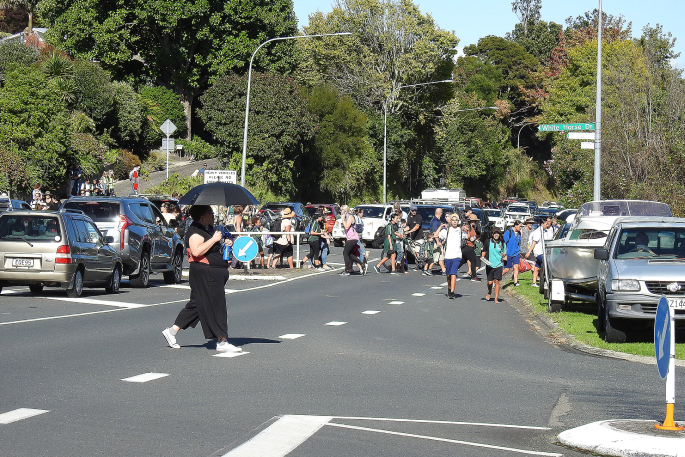Submissions to Whakatāne District Council’s Long-term Plan have left councillors worried that people don’t know where to go during a tsunami alert.
The council’s instructions in the case of a tsunami warning or a long or strong earthquake is to head for high ground or move inland.
However, a key theme from submissions to the LTP was people calling for a new bridge to help ease congestion in the case of an emergency.
Many mentioned the 2021 tsunami alert that resulted in jammed Whakatāne streets from people trying to flee town by car.
Councillor Gavin Dennis felt there was a communication problem.
"I’m just stunned that Whakatane hasn’t got that overall plan communicated to the people, to the extent we saw so many people in their submissions saying they needed to get out (over the bridge).”
During the 2021 tsunami warning one of the Whakatāne rest homes had evacuated to Braemar Road.
“They crossed over the Whakatane River, the Rangitaiki River and the Tarawera River. They could have been killed in each one of those in a decent tsunami ... It is a disaster for people to go out there,” Gavin says.
“It should have been one of our priorities, to say to the people, ‘you need to go up the hill,’ and then provide a way to do it.”
He suggested the Landing Road bridge be blocked by police in the case of a tsunami warning and streets converted to double lane in one direction – to safety.
Councillor Andrew Iles questioned why anyone would try to cross the Whakatāne River in the event of a tsunami.
“You'd be heading our way wouldn’t you?” he says, gesturing south toward Tāneatua and Waimana in his Te Urewera ward.
Many people did walk to higher ground along Hillcrest and Mokorua Gorge roads during the tsunami alert. Others attempted to drive south along Tāneatua Road.
One elderly Whakatāne resident who didn’t want to be named says she was unable to walk up the hill due to a disability. It took her over an hour to reach Tāneatua as traffic was at a standstill. Much of that time was spent just trying to get across town.
“It was stop-start all the way to Tāneatua. We couldn’t have gone over 20kmh all the way there. A few people pulled their cars to the side of the road and started to climb the hill. I remember looking at the fence to a farm paddock and wondering if I would be able to climb through it.”
She felt many people may have turned back and tried to take an alternative route out of town over the bridge, which was something she had considered.
Chief executive Steph O’Sullivan agreed it was concerning how many people indicated needing to cross the river in an emergency as it was not what they should do.
The council had conducted a letterbox drop with emergency management and evacuation information to 7000 households last year.
Civil Defence Emergency Management duty controller Stace Tahere says while Emergency Management Bay of Plenty and the regional council had commissioned new tsunami inundation modelling to update tsunami evacuation maps it would not include river surge as as that would have minimal influence on the impact a tsunami would have on a community.
The new tsunami inundation modelling is expected to be completed in mid to late 2024 with resulting changes to evacuation zones in 2025 possible.
“As with any new science, we will let people know about any relevant changes and how this may impact them. For now, the existing tsunami evacuation maps include the most up-to-date information available.”
LDR is local body journalism co-funded by RNZ and NZ On Air.




2 comments
Disasterous
Posted on 15-05-2024 16:43 | By OG-2024
TOTAL communications failure!
Perhaps the council and such powers need to go up to the Coromandel and see JUST HOW Tsunami warnings and sign-age are done!
Around the Whitianga and Cooks Beach area there are LARGE signs showing where and how to evacuate to higher ground, you can NOT miss them really.
Not Rocket Science
Posted on 15-05-2024 20:21 | By Yadick
Get to high ground and stay well clear of any waterways.
What part is hard to understand.
Leave a Comment
You must be logged in to make a comment.